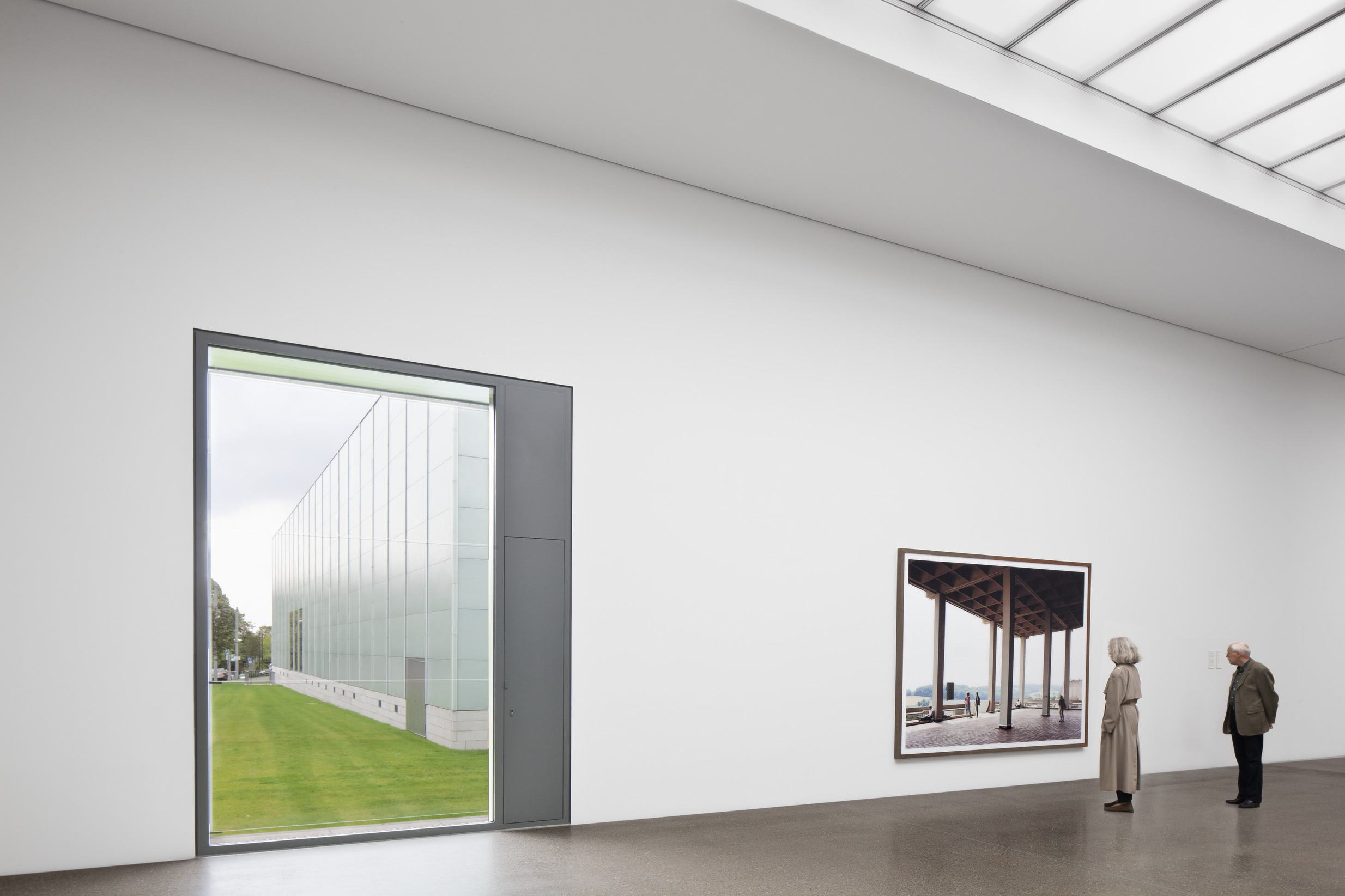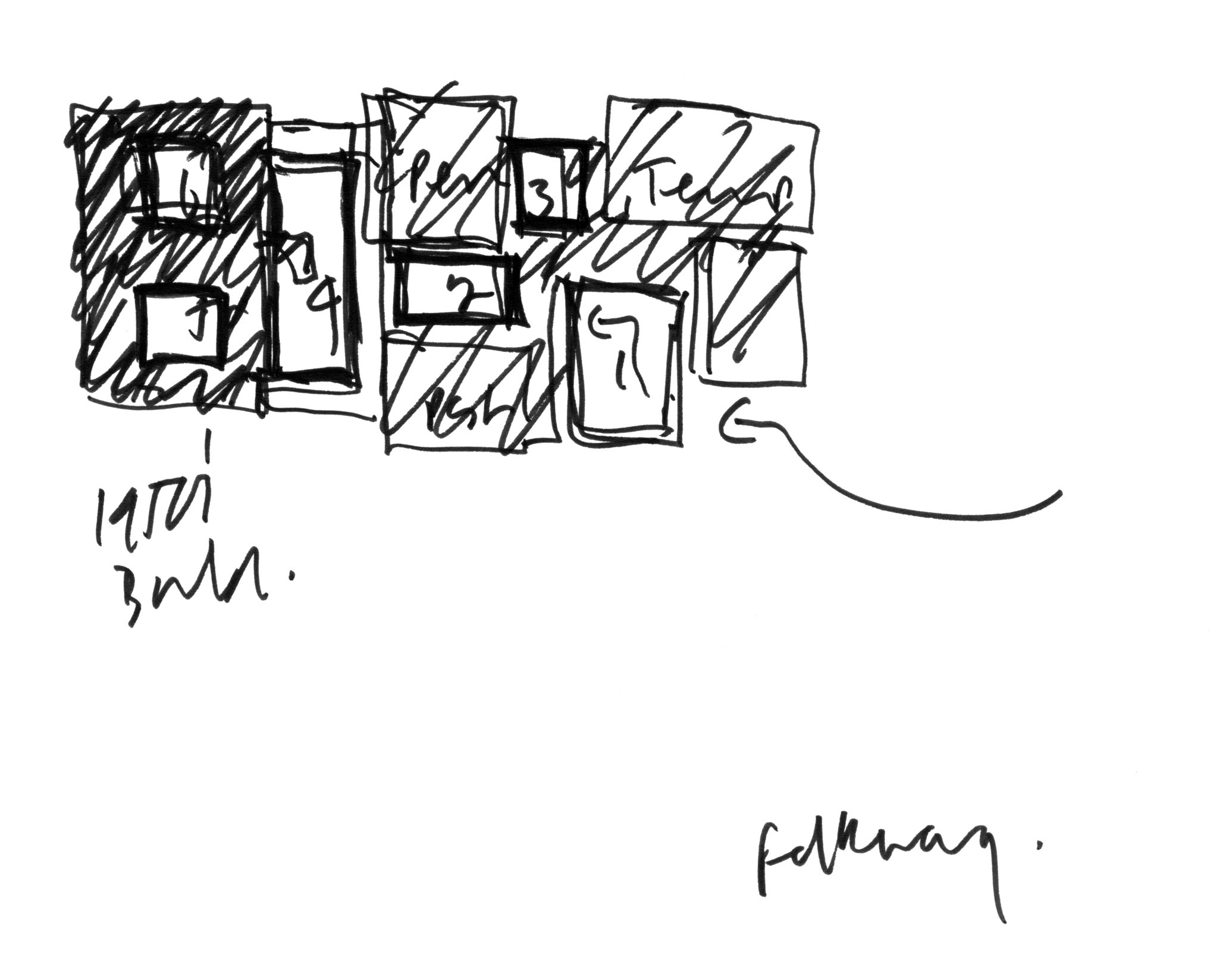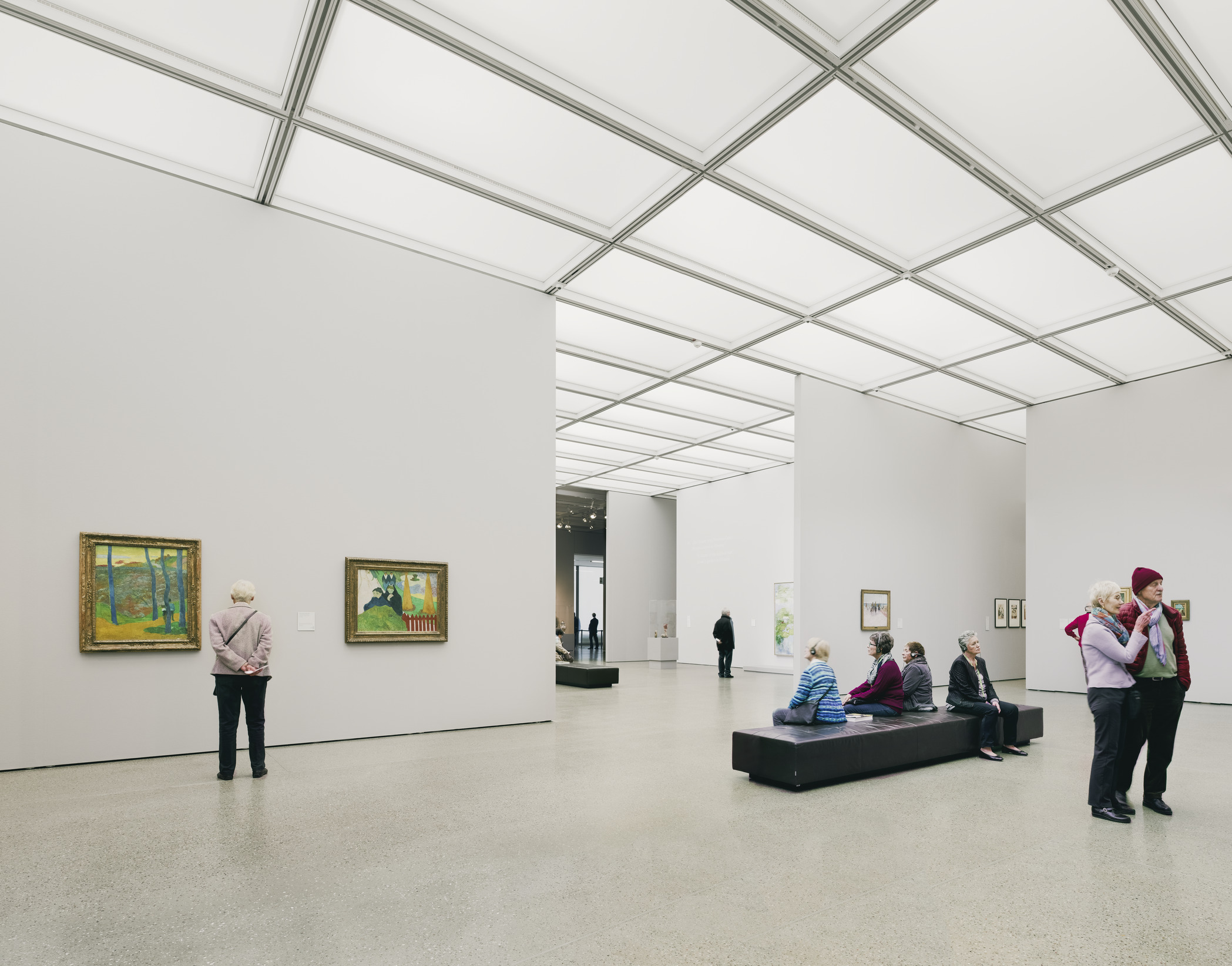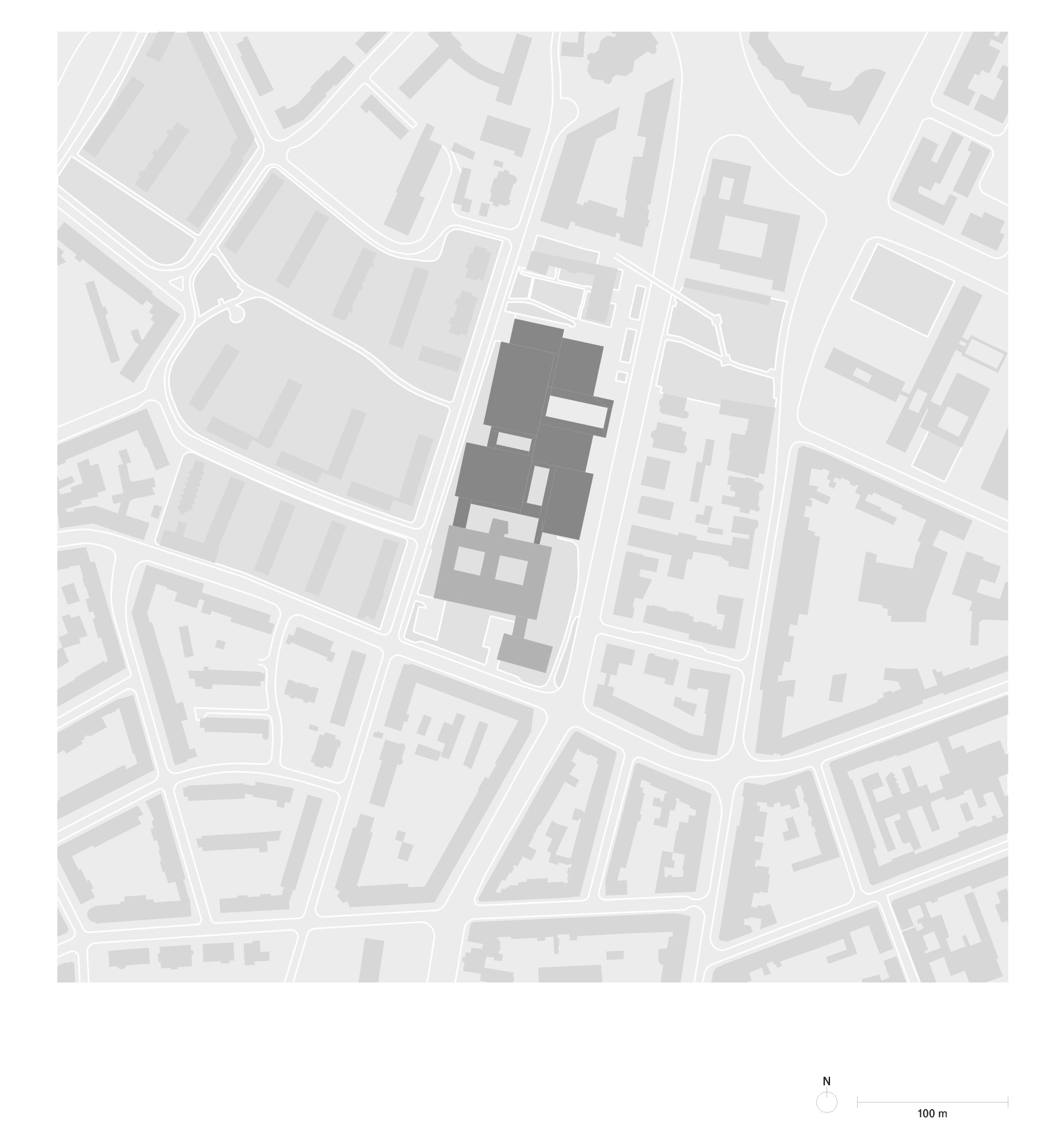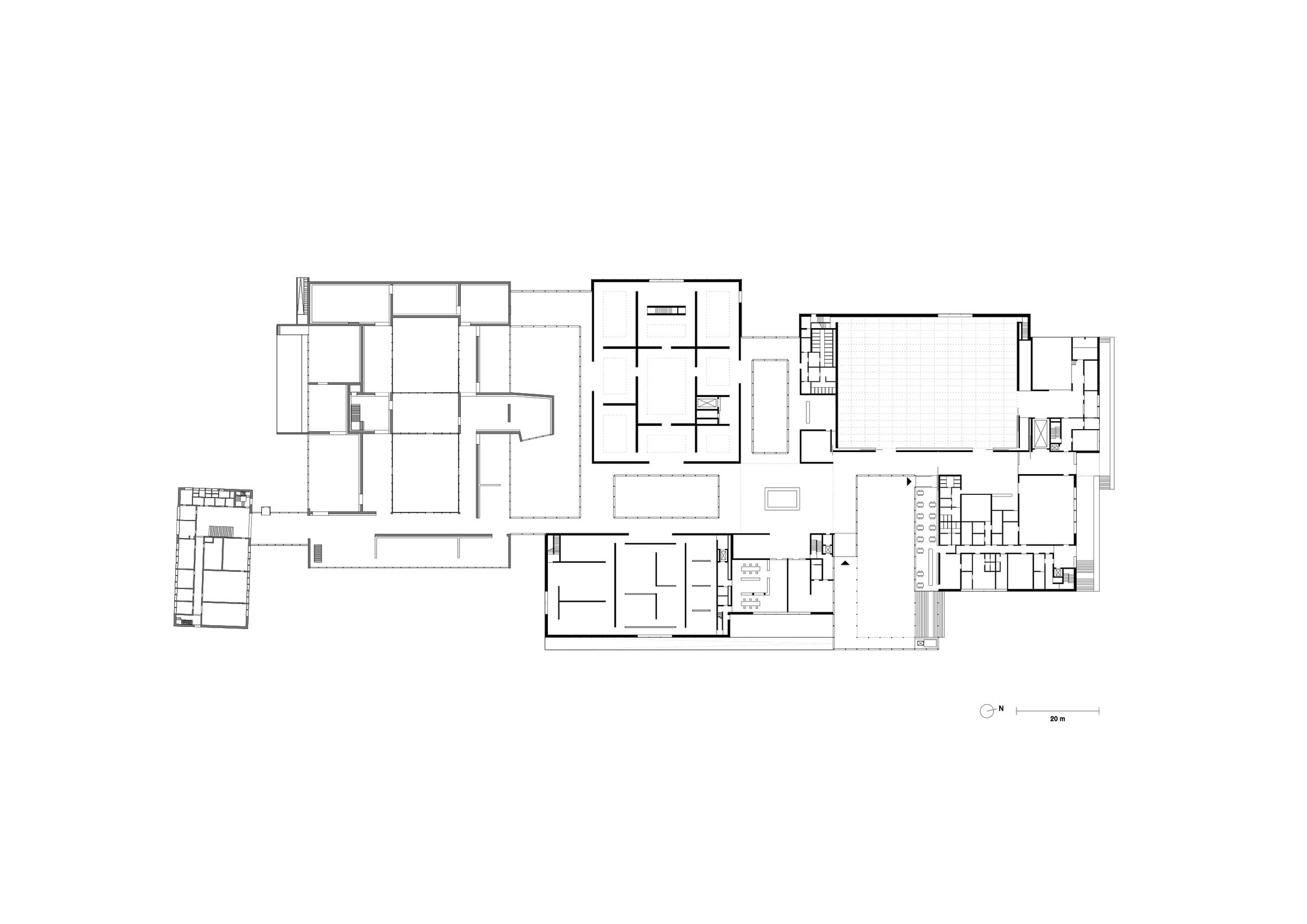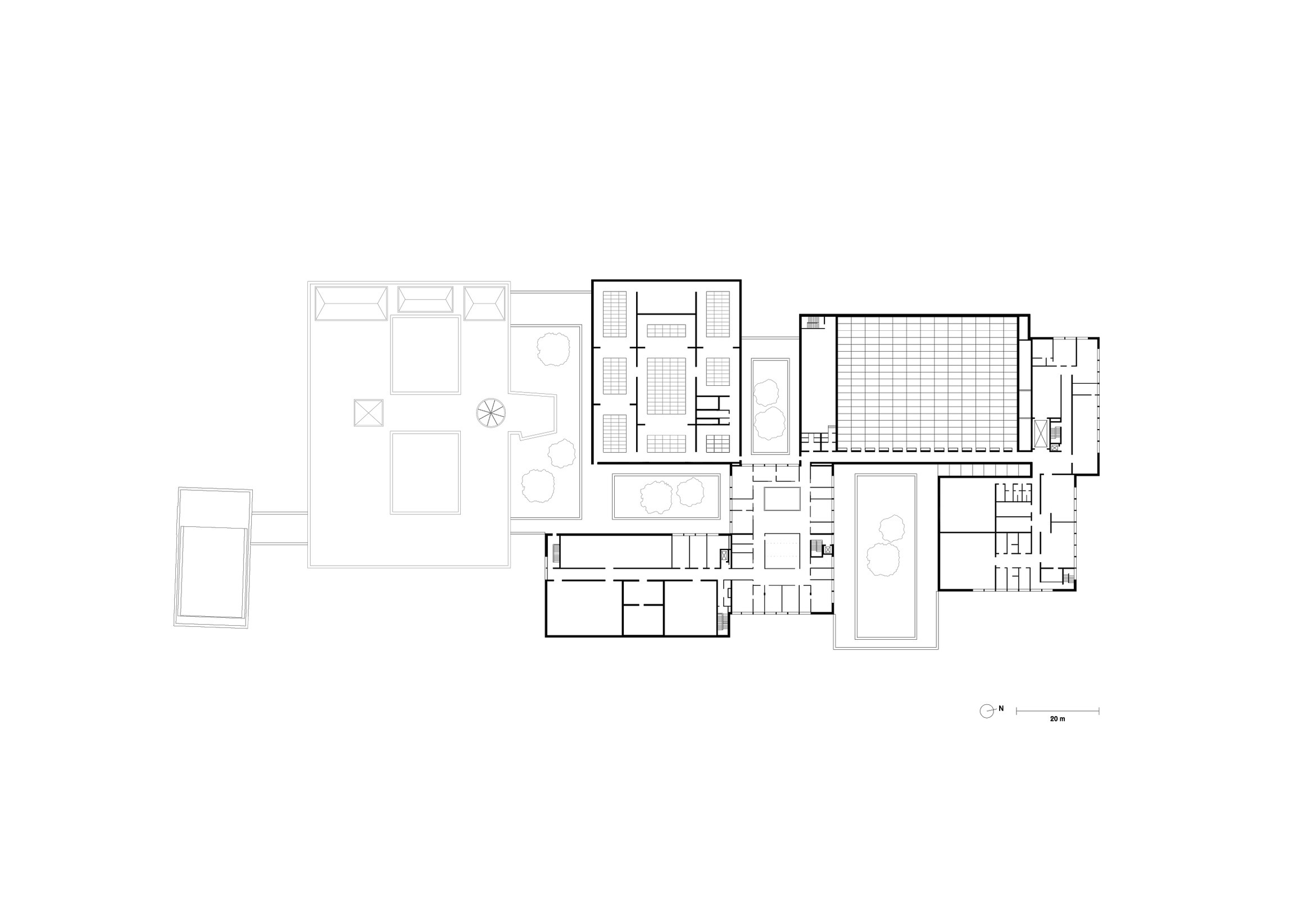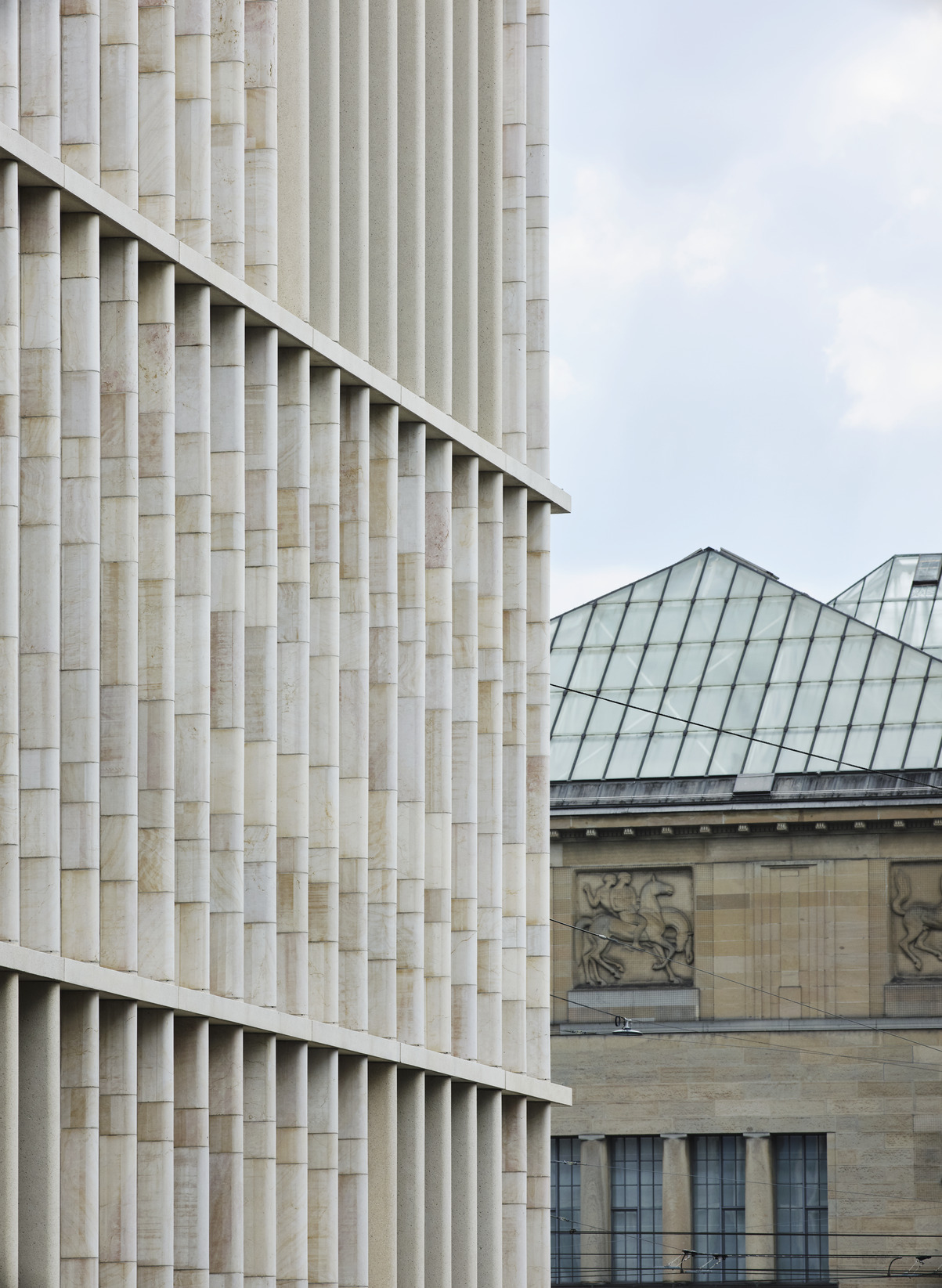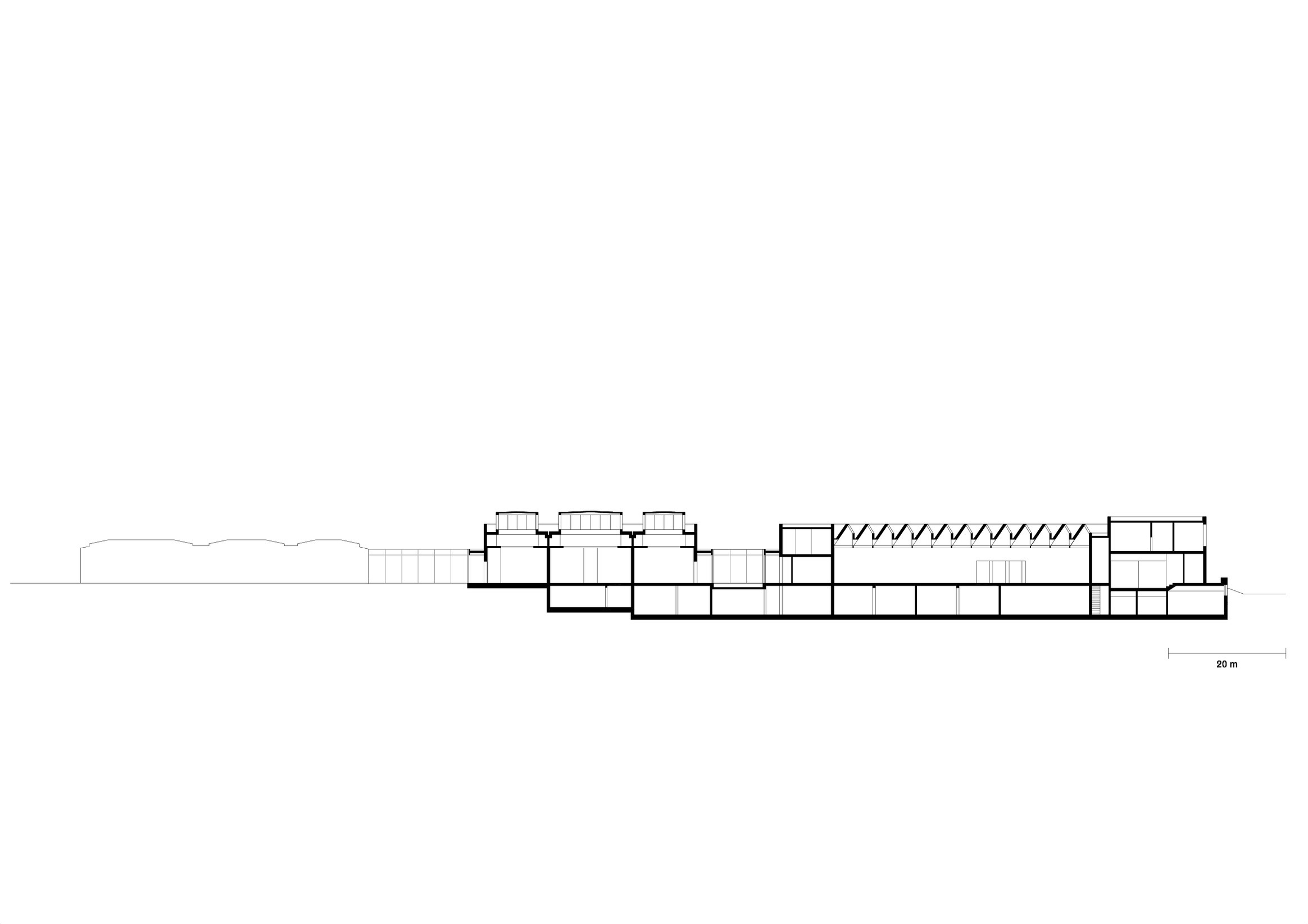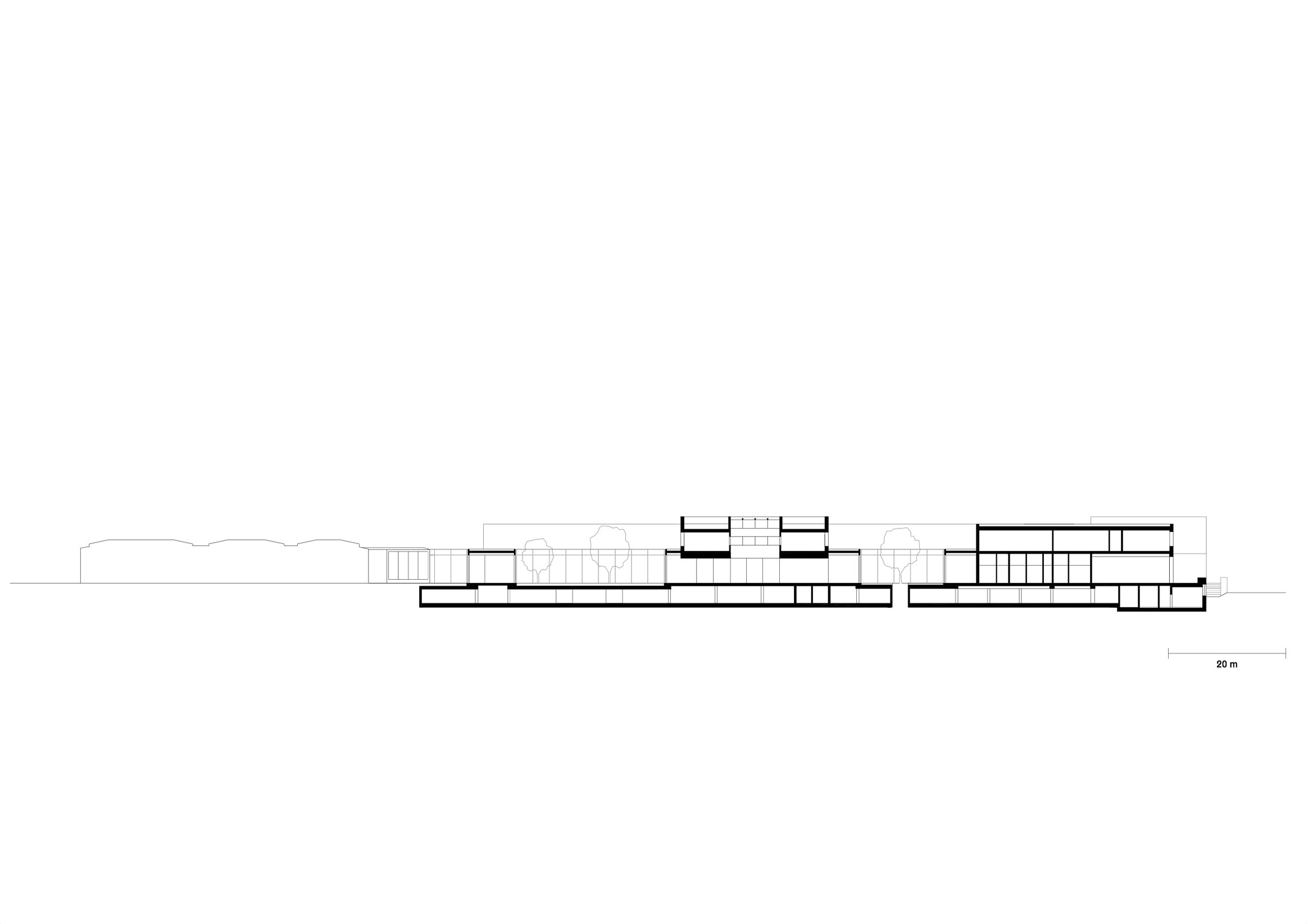Museum Folkwang
Essen, Germany
2007–09
The Museum Folkwang, founded in Hagen by Karl Ernst Osthaus in 1902, was the first museum of contemporary art in Europe. The most significant works were transferred from Hagen to Essen in 1922, from which point on, aside from a period when the National Socialists temporarily divested the collection, the museum was able to pursue a high level of collecting activity. Today, it is one of the most high profile museums of Classic Modernism in Germany.
The new museum extension by David Chipperfield Architects Berlin complements the original listed building, preserving its integrity while perpetuating the architectural principle with an ensemble of six volumes and four inner courtyards, gardens and covered walkways. The publicly accessible areas connect seamlessly with the existing exhibition areas. A generous open stairway leads from Bismarckstraße into the new foyer, which takes the form of an open interior courtyard with a restaurant and a bookstore, and is protected from the street by a glass façade.
Visitors are welcomed into a succession of differing rooms – exhibition areas with ceiling heights of up to six metres, a library and reading room, a multifunctional room, an events space, storage and restoration workshops. The extension, which is oriented towards Essen’s city centre, provides a new urban focus together with the neighbouring Institute for Advanced Study in the Humanities. The translucent, alabaster-like façade consists of large rectangular recycled glass slabs. The colour of the façade shifts with the changing natural light and the integrated window openings sit flush with the façade. Polished screed was used for the floors, which is similar in colour and texture to the concrete elements used for the plinth.
Ground floor plan
First floor plan
Data and credits
- Competition
- 2007
- Project start
- 2007
- Completion
- 2009
- Opening
- 2010
- Gross floor area
- 24,800m²
- Client
- Neubau Museum Folkwang Essen GmbH on behalf of the
Alfried Krupp von Bohlen and Halbach-Stiftung - Project controlling
- W+P Gesellschaft für Projektabwicklung mbH, Essen
- Architect
- David Chipperfield Architects Berlin
- Partners
- David Chipperfield, Harald Müller, Alexander Schwarz (Design lead)
- Project architect
- Peter von Matuschka (Competition), Ulrike Eberhardt (Preparation and brief to Developed design), Eberhard Veit (Developed design, Design intent details, Site design supervision)
- Project team
- Wolfgang Baumeister, Gesche Gerber, Ilona Priwitzer, Mariska Rohde, Franziska Rusch, Thomas Schöpf, Manuel Seebass
- Competition team
- Markus Bauer, Florian Dierschedl, Ulrike Eberhardt, Annette Flohrschütz, Christian Helfrich, Barbara Koller, Nicolas Kulemeyer, Dalia Liksaite, Marcus Matthias, Sebastian von Oppen, Antonia Schlegel, Marika Schmidt, Gunda Schulz, Robert Westphal
- Executive architect
- Plan Forward GmbH, Stuttgart (Technical design)
WBP Planungsgesellschaft mbH, Essen (Procurement, Construction supervision) - Landscape architect
- Planungsbüro Meinholf Hasse, Mühlheim a.d. Ruhr
- Structural engineer
- Ingenieurberatung Pühl und Becker VBI, Essen
Seroneit und Schneider GmbH, Essen - Services engineer
- Giesen-Gillhoff-Loomans GbR, Krefeld
BBT Ingenieure, Düsseldorf - Building physics, Acoustics
- ISRW, Dr. Ing. Klapdor GmbH, Düsseldorf
- Fire consultant
- Dipl. Ing. Bernhard Spitthöver GmbH, Essen
- Lighting consultant
- Arup Deutschland GmbH, Berlin and Arup Ltd., London
- Façade consultant
- KonTec Fassadenberatung, Dormagen
- Photography
- Simon Menges, Christian Richters, Ute Zscharnt
- Selected Awards
- RIBA Stirling Prize 2011, Shortlist
Chicago Athenaeum International Architecture Awards 2011
BDA Preis Nordrhein-Westfalen, Architekturpreis Nordrhein-Westfalen 2011, Shortlist
RIBA EU Awards 2011
BDA Essen 2010, Auszeichnung Guter Bauten
Architekturpreis der Stadt Essen 2010
- Links
- museum-folkwang.de
